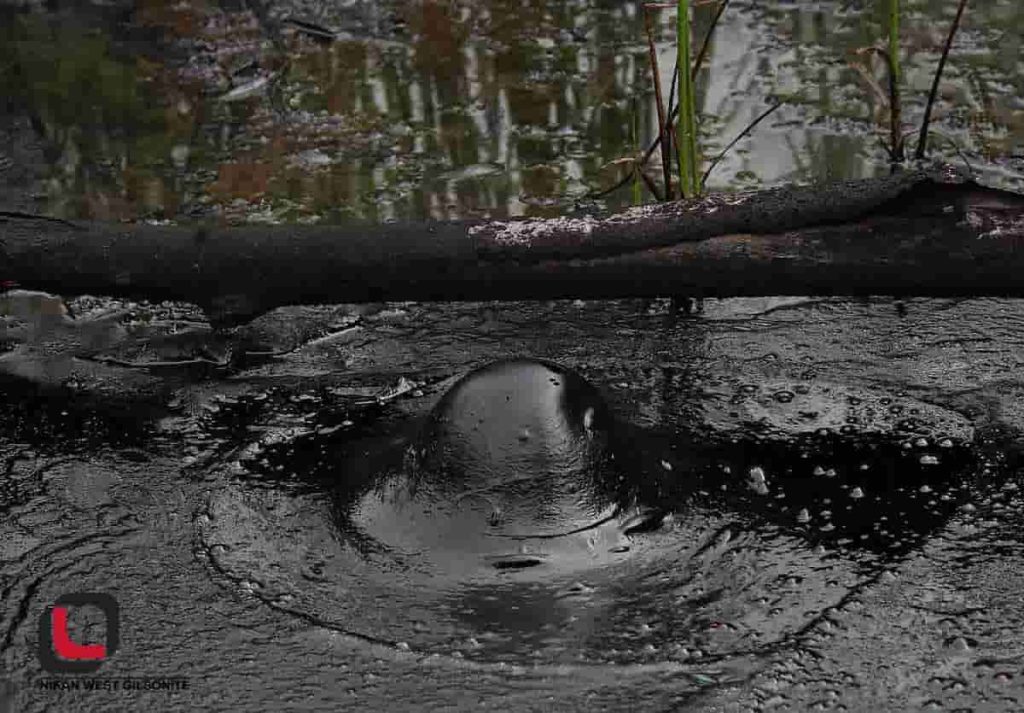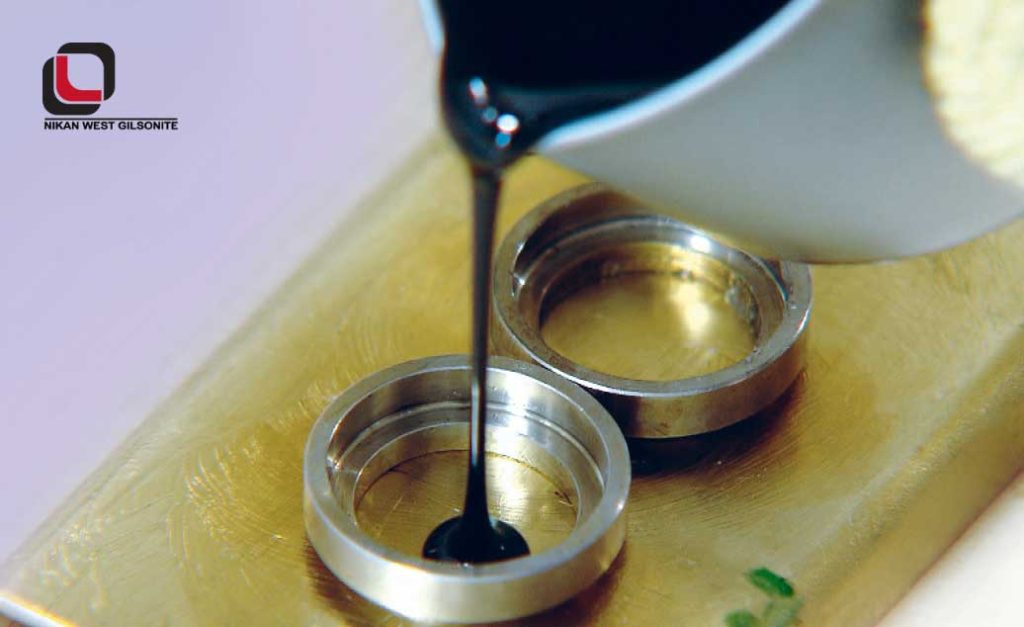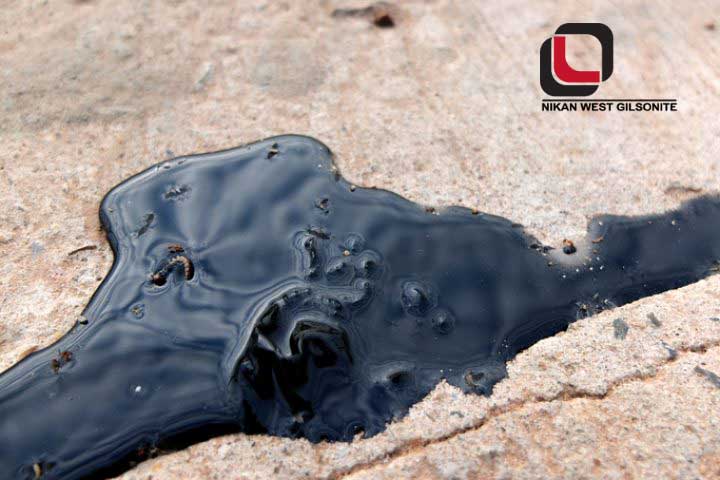Storing bitumen is one of the most important challenges that gilsonite producers might face since it is an inseparable part of each industry. In this article, we are going to talk about the ways to store bitumen.
First, we need to know that natural bitumen is a dark substance made up of a huge number of hydrocarbons that have been mixed into a colloidal system, as well as sulfuric and oxygenated hydrocarbons. The bitumen hardens into a loose, runny dough that dissolves in mineral oils when heated. Because bitumen is sticky and causes stone grains to adhere together, it is utilized to create black asphalt surfaces and that’s one of the bitumen uses.
Bitumen Transportation and Storage
Loading, transporting and unloading black adhesives must be done carefully and different types of bitumen should be classified and stored separately. Testing of samples taken from different types of bitumen in the workshop should be by the required characteristics in the specifications. To store and transfer this bitumen for using in natural asphalt, in building and other purposes, we need to consider the following points.
- Adhesives should be kept in a clean and covered area as much as possible to prevent contamination with soil, harmful substances, water, ice, and snow.
- Closed warehouses must be continuously ventilated to prevent the accumulation of flammable gases in them.
- Storage of adhesives should be away from fire and flammable materials and the necessary measures should be taken to announce and extinguish possible fires in them.
- Emulsions can be stored for several months, but care must be taken to prevent them from breaking, clotting.
- When storing, the emulsion barrels should be rolled and turned over from time to time to prevent bitumen cells from settling and sticking to each other.
- Accidental entry of stone materials and chemicals into emulsion containers as well as mixing of two types of emulsions, especially those with different electrical charges, should also be avoided because any of these factors can cause the emulsion to break and clot.
- Cold air is one of the most effective factors in breaking emulsions quickly and freezing them in some cases.
- It is generally recommended to avoid storing the emulsion at a temperature below 2 ° C.
- Before using the emulsion, it is better to roll the emulsion barrels so that the bitumen grains are spread evenly everywhere.
- When it is time to use bituminous materials in any step of the project, the necessary precautions should be taken to avoid any probable harm or accidents.
- Bituminous materials should not be heated above 175 degrees or smoke when heated.
- Direct heating should not be approached by direct flames to heat the bituminous material but by controllable heating devices such as spiral tubes containing hot oil or steam and electrical appliances.
- If we have to use a flame to heat, there must be a barrier between the flame and the bituminous material tank.
- Torch and flame lights should not be used to control and inspect bitumen.
Simple Storage Guidelines
Bitumen and bitumen roads should be safely kept at quarries and road stone facilities with regular maintenance and adherence to some fundamental guidelines.
The Refined Bitumen Association’s (RBA) Code of Practice for the Delivery of Bitumen Products (updated 2001) establishes best practices and minimum criteria for the delivery, receipt, and storage of bitumen products. The RBA also offers recommendations on safe bitumen tank maintenance, and the code of practice includes all elements of delivery. The Energy Institute’s ‘Bitumen Safety Code,’ which covers every aspect of bitumen supply, storage, and handling, including health and environmental management and fire prevention, provides additional guidelines.
If a tank is heated with coils, for example, coke will likely accumulate on the coils over time, making the coil-less efficient and increasing energy use. Emptying the tank and cleaning off any coke build-up could significantly enhance efficiency.
Even externally heated tanks might experience coke build-up or carbonization. When the heating pads come into contact with the tank’s wall, hot patches form, which can lead to carbonization.
The buildup of bitumen deposits on the cross-members of square tanks can further reduce efficiency. If left uncontrolled, these deposits will accumulate to the point where the tank’s storage capacity will be seriously affected. While this is not a safety problem, it is an essential one in terms of cost and efficiency, and one that might be avoided with proper practice and routine maintenance.

However, some maintenance faults have major safety implications, the most concerning of which being the risk of fire or explosion. While Nynas recommends frequent tank cleaning and maintenance, if a tank is taken out of service, it must be totally dry before being re-commissioned. Any water left in the tank after the bitumen is delivered will convert into steam and expand rapidly, posing a serious risk of explosion. The RBA has released a handbook on returning bitumen tanks to service. Because bitumen is a hydrocarbon, the risk of fire cannot be overlooked. When flames do occur, they are frequently reported as occurring in the tank itself; however, this is not always the case: fires can also develop in the tank insulation. Insulation fires can start in one of two ways: through spillages or migration. Rockwool-type products are commonly used to insulate storage tanks, and a spill of bitumen into a Rockwool system can result in a fire.
Even if there are no spills, flames can still occur in the insulation because some of the lighter components in the bitumen can migrate and make their way into the tank insulation over time. This is more of a problem with older tanks, especially ones that are electrically heated with pads on the outside, as hot spots stimulate migration.
Regular tank emptying and replacement of worn insulation – particularly where bitumen has been spilled or migrated – can help prevent fires.
It is critical to do everything necessary to prevent spills. Section 4 of the RBA code of practice for the safe delivery of bitumen products outlines the standards that tank owners must meet to avoid spills when bitumen is supplied, including high-level alarms and well-calibrated gauges.
Customers misunderstand the safe working capacity of their storage tanks, according to data from the RBA’s Health, Safety and Environment committee. Customers account for 90% of spillages at the delivery stage. Customers are required by the code to leave a 10% clearance in their tanks after each bitumen delivery, but certain customers have a tendency to overfill their tanks. High-level alarm systems that are properly installed and operational should prohibit.
?Read more: What are the uses of bitumen in modern industries
Final Top Tips
- Follow the guidelines laid out in the RBA code of conduct.
- Tank gauges should be installed and checked on a regular basis.
- Install high-level alarms and make sure they’re working regularly.
- Tanks should be cleaned and maintained periodically.
- Construct effective bunds around tanks to contain any spills.
- Ensure that vent pipes are clean and well-maintained.
- After any spills or bitumen movement, inspect tank lagging and replace it.
Finally, it is really important to keep in mind that storing bitumen is really essential for all the industries and a having a well-planned schedule and help prevent any possible harm.



